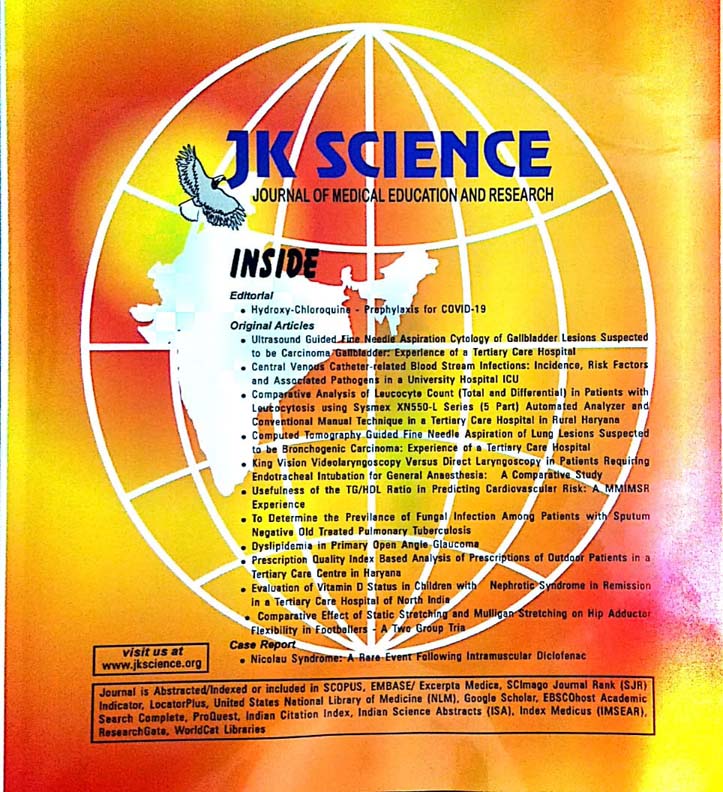A One Year Retrospective Study of the Incidence and Causes of Intrauterine Foetal Deaths in GMC Jammu
Keywords:
Intrauterine foetal deaths, Etiology, Hypertensive disorders of pregnancy, Obstructed labourAbstract
Background: Intrauterine foetal death or IUFD is defined as fetal demise after 20 weeks of gestation. It is a distressing condition for the mother, the family as well as the obstetrician.
Purpose: The purpose of this study was to evaluate the incidence and the causative factors associated with foetal deaths in our institution.
Material and Methods: This was a retrospective observational study conducted in GMC Jammu for a period of one year from January 2019 to December 2019. The data was analysed to study the incidence and the foetal, maternal and placental factors related to IUFD.
Results: The incidence of intrauterine deaths in our study was found to be 24/1000 births. Among the 540 cases enrolled in the study, the predominant age group was 21-25 years (37.7%), primigravida was the predominant parity (40%), 18.5-24.5 was the most common BMI range to which the patients belonged (40.9%), and 37-40 weeks was the commonest gestational age at which IUD occurred (39.8%). Among the causal factors of intrauterine deaths, majority of the IUDs were unexplained (25.5%), followed by hypertensive disorders of pregnancy as a major cause (14.8%), followed by obstructed labour (7.7%), meconium-stained liquor (7.4%) and congenital malformations (7.4%). Majority of the cases underwent induction and normal vaginal delivery (39.8%).
Conclusion: In our study, the majority of the IUDs were unexplained, followed by hypertensive disorders of pregnancy, obstructed labour, meconium-stained liquor and congenital malformations. Hence these factors must be thoroughly evaluated and prompt action must be taken before any complication occurs.
Downloads
Downloads
Published
How to Cite
Issue
Section
License
Copyright (c) 2021 JK Science: Journal of Medical Education & Research

This work is licensed under a Creative Commons Attribution-NonCommercial-ShareAlike 4.0 International License.





